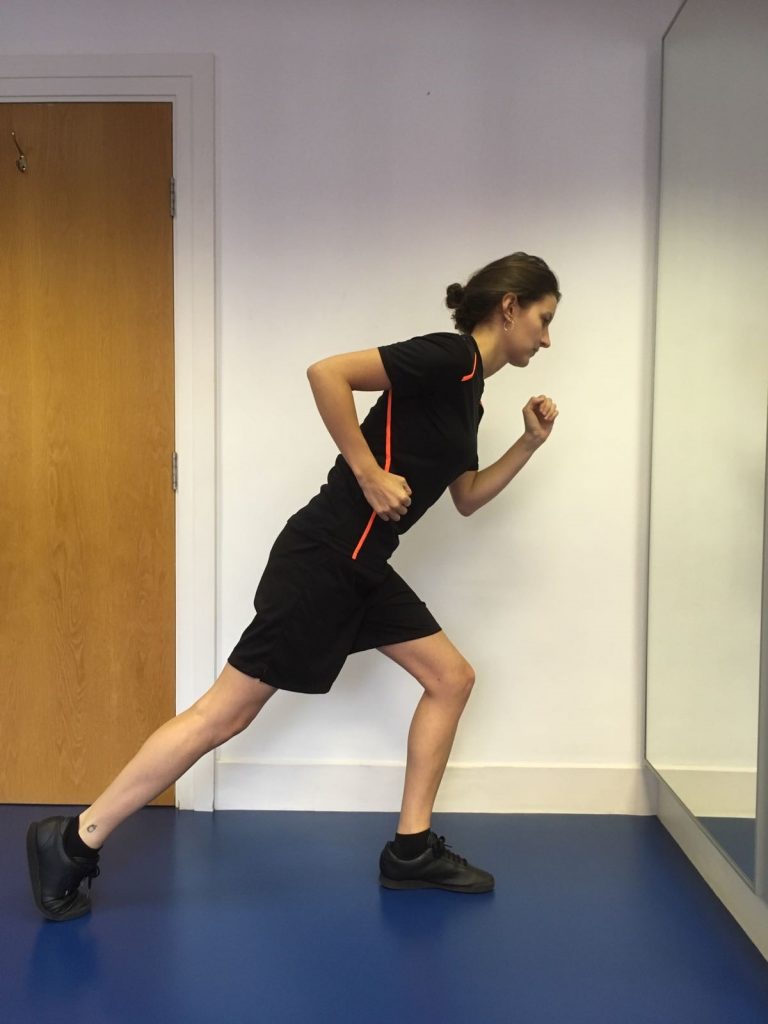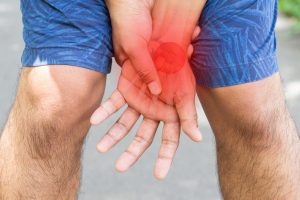
There is such a wide variety in warming up for football. From my experience of playing social football on and off for years, I can see that the process of warming up varies hugely from team to team. For some, warming up means simply doing a few laps around the field, while others go the extra mile and include stretches for their hamstrings and quads to prevent muscle stiffness. Others take it more seriously with pre-planned running and football drills (some are detailed below).
I know that half of my team turns up 30 seconds before the game and off they go!
In football, the key to peak performance lies not only in the game itself but also in the preparation. This article provides a comprehensive guide to effective warm-up drills and exercises for footballers. Discover why warming up is essential and how it can enhance your skills and performance when playing football.
Article Outline:
- Why is Warming-up Important for a Footballer?
- What are the Components of a Typical Warm-up? RAMP
- What Is the RAMP Principle in Warming Up?
- How to Start a Warm-up: The Low-Intensity Jog
- The Importance of Dynamic Warm-up
- Why Include Sprints in Your Warm-up Routine?
- Effective Warm-up Exercises for Playing Football
- Key Warm-up Drills for a Football Match
- What Are Rondo Drills, and How Does It Contribute to Warm-up?
- What is a 4v4-Thirds of Field Drill, and How Do They Contribute to Warm-Up?
- What is 3v2 to Goal and How it Contributes to Warm-up?
- How to Warm Up Effectively for a Football Match or Training Session?
- What is the Best Warm-up for Achieving Peak Performance in Football?
1. Why is Warm-up Important for a Footballer?
Football is a high-intensity sport that requires agility, speed, and technical skills. Therefore, it’s important to warm up and should be an essential part of any footballer’s routine. Coaches can use these simple techniques to prepare their players for a game of football. A good warm up increases blood flow and heart rate, gradually preparing your body’s cardiovascular system for the rigours of a match or pre-training.
There is certainly good evidence supporting warming up before taking part in sport. Over the last 2 decades, research has consistently shown the benefits for pre-sport. An effective warm up can help in reducing injury rates and improving sport performance (please see the references at the bottom of this blog if you’re interested in the research!). It should prepare not only your body but your mind for the increased demands of exercise.
2. What are the Components of a Typical Warm-up?
A typical warm-up for a soccer player involves a combination of lower-intensity cardio exercises, dynamic stretching, and specific drills that simulate in-game movements. The purpose is to prepare the body for activity and focus the mind for what lies ahead. It should provide the opportunity players need to clear the mind and focus on the task at hand.
Personally, I like to use the RAMP principle when warming up for any sport.
3. What Is the Ramp Principle in Warming Up?
The RAMP principle is actually an acronym. It stands for:
RAISE: Your goal is to raise your heart rate, raise your body temperature, raise your respiratory rate and raise your focus and concentration.
ACTIVATE & MOBILISE: These go hand in hand. Your goal is to activate the muscles and mobilise the joints and area’s of the body that you want to be using for the sport you are warming up for. In the case of football, this is the whole body.
POTENTIATE: This is a ‘fancy’ term for increasing the intensity. Your goal is to improve the neuromuscular ‘potential’ of your body. Gradually ramping up the intensity of exercises and drills in your warm-up. Your aim is to get to 80-90% of the level required during the actual sport or activity. This can be effectively done through using drills that include skills from the activity.
What does this look like in a practical sense?
4. How to Start a Warm-up: The Low-Intensity Jog
For RAISE: at the start of the warm-up, jogging at a slow pace is a great way for players to kick-start their warm up routine. It’s great for gradually increasing heart rate and enhances the blood flow to the muscles, providing them with the nutrients muscles need.
5. The Importance of Dynamic Warm-up
For ACTIVATE & MOBILISE: Dynamic warm up exercises are key to any football warm-up routine. They involve active movements that move your muscles and joints, improving your range of motion and reducing the risk of injury. Examples of dynamic warm-up exercises include high knees, butt kicks, and lunges. Here are a few other types of exercises that are essential to prepare the body for the early stages of the game and beyond.
6. Why Include Sprints in Your Warm-up Routine?
Sprinting in the warm-up is important as it prepares players for the quick, explosive movements they will have to perform during the match. It also helps to increase agility and lower body power. As you gradually increase the speed, you also head towards the next step of the ‘RAMP’ – POTENTIATE.
7. Effective Warm-up Exercises for Playing Football
For POTENTIATE: Apart from jogging, sprinting, and dynamic stretching, football-specific drills are integral to a warm-up routine. Drills like cone dribbling or a dribbling warm-up in lines allow players to work on speed, control, and precision. This can be set up as a relay race, where players dribble across the field and back. Additionally, tag games offer an opportunity for players to work on their reactions and decision-making under pressure.
Here are some specific exercises to get you warm for your next game:

Running Drills – Start slowly running across the pitch, getting gradually faster and faster as the drill progresses.

Walking lunges – Trunk upright, take a big step out and drop your back knee down towards the floor. Aim to keep your front knee behind your toes, then stand to bring the back leg through and take a big step out with that leg. Continue alternate legs.

Squats: With your feet slightly wider than shoulder width apart. Keep your trunk upright, and sit back like you are going to sit on an imaginary chair behind you. Aim to drop your bottom just below the height of your knees and then stand back up again.

Vertical Jumps: From a squat position, jump up as high as you can and land dropping into a squat position again. Repeat.

Lateral Jumps: Perform lateral jumps by starting in a squat position, explosively leaping to the side over an imaginary line, and gracefully returning to a squat position upon landing. Repeat, jumping back over the imaginary line to land back where you started.

Running Hip Turn Outs/Ins: As you jog, raise one knee up and out to the side, as if swinging your leg over a gate, repeat this one the other side. This can be performed lifting your leg from in to out or out to in.

Sprinting Drills: Progressively faster sprinting drills.
8. 3 Best Warm up Drills for a Football Match
Possession drills, like ‘Rondo’s’ and ‘4v4-Thirds of Field’, and ‘3v2 to Goal’ are typical warm-up exercises used by football teams and players. These drills not only warm up the body but also sharpen technical skills and foster mental preparation, setting the tone for the match or practice session ahead.
8.a. What Are Rondo Drills, and How Does It Contribute to Warm-up?
Rondo drills involve one group of players aiming to keep possession of the ball from another individual or group of players. The goal is to pass the ball between players on the ‘attacking’ team. The objective is to maintain possession within a specific area, circle, time limit, or number of passes. ‘Defending’ players try to stop this by intercepting the ball.
8.b. What is a 4v4-Thirds of Field Drill, and How Do They Contribute to Warm-Up?
In this drill, the play area is split into thirds (goal to goal). The left and right thirds hold the attacking and defending wingers, while the middle third holds 1 attacking and 1 defending player from each team. The players must stay in their Thirds with the aim of scoring a goal at the end they are attacking. This is a great drill to not only warm the players up but to get them thinking about communicating well and using space to their advantage.
8.c. What is 3v2 to Goal and How It Contributes to Warm-up?
3v2 to goal is a drill where three attacking players attempt to score against two defenders. This drill provides a fun and competitive edge to the warm-up and allows players to get a feel for game-like situations. It’s a great way for players to work on their decision-making and teamwork skills before the match or training session begins.
9. How to Warm Up Effectively for a Football Match or Training Session?
An efficient warm-up progresses to gradually increase in intensity and complexity, beginning with a simple jog and ending with specific drills that mimic game situations. The warm-up should last a minimum of around 10 minutes. Optimally, a routine should last for approximately 20 to 30 minutes, ensuring that the body is ready for the demands of a full 90 minutes of football. It’s important to remember that it should be tailored to the individual player’s needs and the requirements of the upcoming game. One that challenges the player’s concentration also provides an opportunity to clear the mind of any unwanted distractions.
10. What is the Best Warm-up for Achieving Peak Performance in Football?
The best warm-up is one that prepares both the body and mind for the game ahead. It should incorporate a mix of cardiovascular activities, dynamic stretching, and football-specific drills. This combination ensures that the body is physiologically prepared, and the mind is psychologically focused and ready for the mental challenges of a match. It’s not just about injury prevention. Its important players get a proper warm-up, so players play a game without physiological risk of injury.
Remember:
- A warm up is an essential pre-cursor for a player to achieve peak performance.
- It begins with a low-intensity jog and gradually increases in intensity.
- Sprinting prepares the body for explosive movements.
- Dynamic warm-ups improve range of motion and reduce risk of injury.
- Specific football drills help to sharpen technical skills.
- 3v2 to goal is an effective drill that simulates match situations.
- An efficient warm-up lasts 20-30 minutes and is tailored to the individual player and game requirements.
- The best warm-up prepares both the body and mind for the challenges of a match.
If you are struggling with an injury from football then get in touch so our expert physios can help you get back to playing the sport you love!
References
Brito J, Figueiredo P, Fernandes L, et al. Isokinetic strength effects of FIFA’s “The 11+” injury prevention training programme. Isokinetics Exerc Sci 2010;18:211–15
Engebretsen AH, Myklebust G, Holme I, et al. Prevention of injuries among male soccer players: a prospective, randomized intervention study targeting players with previous injuries or reduced function. Am J Sports Med 2008;36:1052–60
Fernandes, A., da Silva, C., Teoldo da Costa, I., and Marins, J. The “FIFA 11+” warm-up programme for preventing injuries in soccer players: a systematic review 2015:Fisioter. mov. vol.28 no.2
Gatterer H, Ruedl G, Faulhaber M, et al. Effects of the performance level and the FIFA “11” injury prevention program on the injury rate in Italian male amateur soccer players. J Sports Med Phys Fitness 2012;52:80–4
Herman, K., Barton, C., Malliara, P., & Morrissey, D. The effectiveness of neuromuscular warm-up strategies, that require no additional equipment, for preventing lower limb injuries during sports participation: a systematic review. BMC Medicine201210:75
Hagglund M, Walden M, Ekstrand J. Lower reinjury rate with a coach-controlled rehabilitation program in amateur male soccer: a randomized controlled trial. Am J Sports Med 2007;35:1433–42
Junge A, Rosch D, Peterson L, et al. Prevention of soccer injuries: a prospective intervention study in youth amateur players. Am J Sports Med 2002;30:652–9
Soligard T, Myklebust G, Steffen K, et al. Comprehensive warm-up programme to prevent injuries in young female footballers: cluster randomised controlled trial. BMJ 2008;337:a2469




Comments